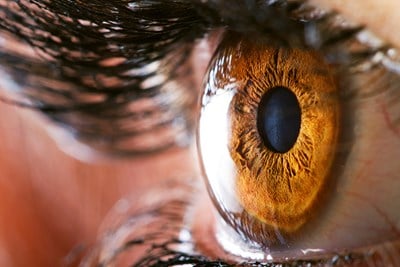Being blind is one of the most difficult disorders to manage -- particularly for people who didn’t start out life without vision. While some people can’t see because of an issue with the eyeballs themselves, others experience a cognitive disruption that prevents what the eyes are seeing from sending it to the brain. Here’s a look at few common causes of blindness.
According to the World Health Organization (WHO), the main common causes of visual impairment worldwide (with some exceptions in undeveloped countries) are:
- Cataracts: 47.9%
- Glaucoma: 12.3%
- Age-related macular degeneration: 8.7%
- Corneal opacities: 5.1%
- Diabetic retinopathy: 4.8%
- Childhood blindness: 3.%
- Trachoma: 3.6%
Cataracts
Affecting approximately half the world’s population, developing cataracts means the eye becomes cloudy, losing its clearness and ability of light to pass through. It can take some time to develop cataracts, but eventually, they can make it difficult to do anything from reading a book to driving a car. Your vision may become blurred and particularly bad at night. Additionally, you may notice a halo of light around the focus of your vision, have frequently changing vision prescriptions, become more sensitive to light, and have trouble seeing colors clearly. One eye may see double. Injuries can impact the development of cataracts, but aging is a frequent cause as well. Until they begin to seriously interfere with your vision (and therefore life), most ophthalmologists recommend waiting to have cataract surgery, which has become very safe and extremely effective.
Glaucoma
Glaucoma occurs when the optic nerve that delivers the information your eyes gather to the brain progressively becomes more and more damaged until vision disappears completely. There are several types of glaucoma, the most common of which is primary open angle glaucoma. There are generally no warning signs, but early treatment can halt vision loss considerably. Unfortunately, glaucoma is not curable and although it is caused by optic nerve damage, genetics plays a huge role in its development. Even with treatment, about a tenth of those affected by glaucoma still experience vision loss.
Age-Related Macular Degeneration
The macula is located in the retina and makes it possible to see detail, such as fine print. There are multiple kinds of macular degeneration, but the most common is the type that develops as a result of growing older -- the macula naturally begins to break down. Drusen deposits and abnormal blood vessels under the retina are the most likely causes of macular degeneration. Symptoms include blurry vision and issues with the central line of vision, which can eventually lead to complete loss of central vision. However, a different part of the eye is responsible for peripheral vision, which means complete vision loss is rare and often occurs only in one eye.
Corneal Opacities
Corneal opacities can be congenital (present at birth) or as the result of an injury to the eye. The cornea is a protective layer that helps bend light so the retina can focus. Symptoms depend on the underlying cause, but may include red, swollen, irritated, or watery eyes, other discharge coming from the eye, feeling like there’s something in the eye, light sensitivity, cloudy spots on the eye, and, of course, loss of vision. Cuts and scratches (as a result of something hitting the eye or getting stuck in the eye (like a grain of sand), chemical burns, contact lens complications, extended radiation to the eyes as a result of light reflecting off surfaces like snow, untreated infections, inherited corneal dystrophies, and a variety of other syndromes can all result in corneal opacities. Permanent damage may require a corneal transplant.
Other Causes
Diabetic retinopathy is a complication of diabetes that can result in blindness. Over time, the retina’s blood vessels change, and more years of diabetes equals a higher likelihood of retinopathy. The vessels become engorged and burst, abnormal blood vessels develop, or the retina can break free; sometimes only mild vision interference occurs, but sometimes it can result in complete blindness.
Common causes of childhood blindness include the german measles, mutations or defects, injury, vitamin B and other nutrient deficiencies, retinopathy of prematurity, and other infections or ophthalmia neonatorum (bacteria enters the eyes of the infants from the mother’s birth canal, although it is now largely preventable). Trachoma is a contagious, preventable, and treatable bacterial infection caused by Chlamydia trachomatis. Itchiness, irritation, discharge, inflammation, photophobia, and pain may all result.



